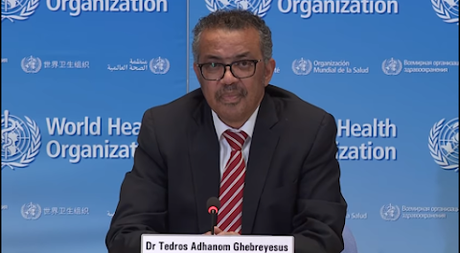
5 Reasons The World Needs WHO (World Health Organization) To Fight The COVID-19 Pandemic (screengrab)
1) Helping countries to prepare and respond
WHO has issued a COVID-19 Strategic Preparedness and Response Plan, which identifies the major actions countries need to take, and the resources needed to carry them out.The plan, which is updated as fresh information and data improve WHO's understanding of the characteristics of the virus and how to respond, acts as a guide for developing country-specific plans.
The health agency's six regional offices, and 150 country offices, work closely with governments around the world to prepare their health systems for the ravages of COVID-19, and to respond effectively when cases arrive and begin to mount.
With partners, WHO set up the COVID-19 Solidarity Response Fund, to ensure patients get the care they need, and frontline workers get essential supplies and information; and to accelerate research and development of a vaccine and treatments for all who need them.
With donations from governments, the private sector and individuals, more than $800 million has been pledged or received for the response so far.
2) Providing accurate information, busting dangerous myths
The internet is awash with information about the pandemic, some of it useful, some of it false or misleading. In the midst of this “infodemic”, WHO is producing accurate, useful guidance that can help save lives.This includes around 50 pieces of technical advice for the public, health workers and countries, with evidence-based guidance on every element of the response, and exploding dangerous myths.
The health agency benefits from the expertise of a global network of health professionals and scientists, including epidemiologists, clinicians and virologists, to ensure that the response is as comprehensive, authoritative and representative as possible.
To ensure information is correct and helpful, WHO set up a team to give everyone access to timely, accurate and easy-to-understand advice, from trusted sources. In addition, daily situation reports and press briefings, as well as briefings with governments, are keeping the world informed about the latest data, information and evidence.
Many social media and tech companies are working closely with WHO to aid the flow of reliable information, including Instagram, Linkedin and TikTok; and chatbots on the Whatsapp and Viber platforms have garnered millions of followers, sending out timely updates and reports.
3) Ensuring vital supplies reach frontline health workers
Personal protective equipment is essential to ensure health professionals are able to save lives, including their own. So far, WHO has shipped more than two million items of personal protective equipment to 133 countries, and is preparing to ship another two million items in the coming weeks. More than a million diagnostic tests have been dispatched to 126 countries, in all regions, and more are being sourced.However, far more is needed, and WHO is working with the International Chamber of Commerce, the World Economic Forum, and others in the private sector, to ramp up the production and distribution of essential medical supplies.
On 8 April, WHO launched a “UN COVID-19 Supply Chain Task Force”, which aims to dramatically increase the supply of essential protective equipment where it is needed.
4) Training and mobilizing health workers
WHO is aiming to train millions of health workers, via its OpenWHO platform. Thanks to this online tool, life-saving knowledge is being transferred to frontline personnel by the Organization, and its key partners.Users take part in a worldwide, social learning network, based on interactive, online courses and materials covering a variety of subjects. OpenWHO also serves as a forum for the rapid sharing of public health expertise, and in-depth discussion and feedback on key issues. So far, more than 1.2 million people have enrolled in 43 languages.
Countries are also being supported by experts, deployed around the world by the WHO's Global Outbreak Alert and Response Network (GOARN). During outbreaks, the network ensures that the right technical expertise and skills are on the ground where and when they are needed most.
Emergency Medical Teams are also an important part of the global health workforce. These teams are highly trained, and self-sufficient, and are sent to places identified as disaster or emergency zones.
5) The search for a vaccine
Laboratories in many countries are already conducting tests that, it is hoped, will eventually lead to a vaccine. In an attempt to corral these efforts, WHO brought together 400 of the world's leading researchers in February, to identify research priorities.The agency launched a “Solidarity Trial”, an international clinical trial, involving 90 countries, to help find effective treatment. The aim is to rapidly discover whether any existing drugs can slow the progression of the disease, or improve survival.
To better understand the virus, WHO has developed research protocols that are being used in more than 40 countries, in a coordinated way, and some 130 scientists, funders and manufacturers from around the world have signed a statement committing to work with WHO to speed the development of a vaccine against COVID-19.
Helping the poorest and most vulnerable
In his 8 April press briefing, Tedros said that WHO is involved with many other initiatives and actions, but all of them come under these five essential pillars.The agency's focus, he said, is “on working with countries and with partners to bring the world together to confront this common threat together”.
A particular concern, he added, is for the world's poorest and most vulnerable, in all countries, and WHO is committed to “serve all people of the world with equity, objectivity and neutrality.”
SOURCE: UN News Centre

